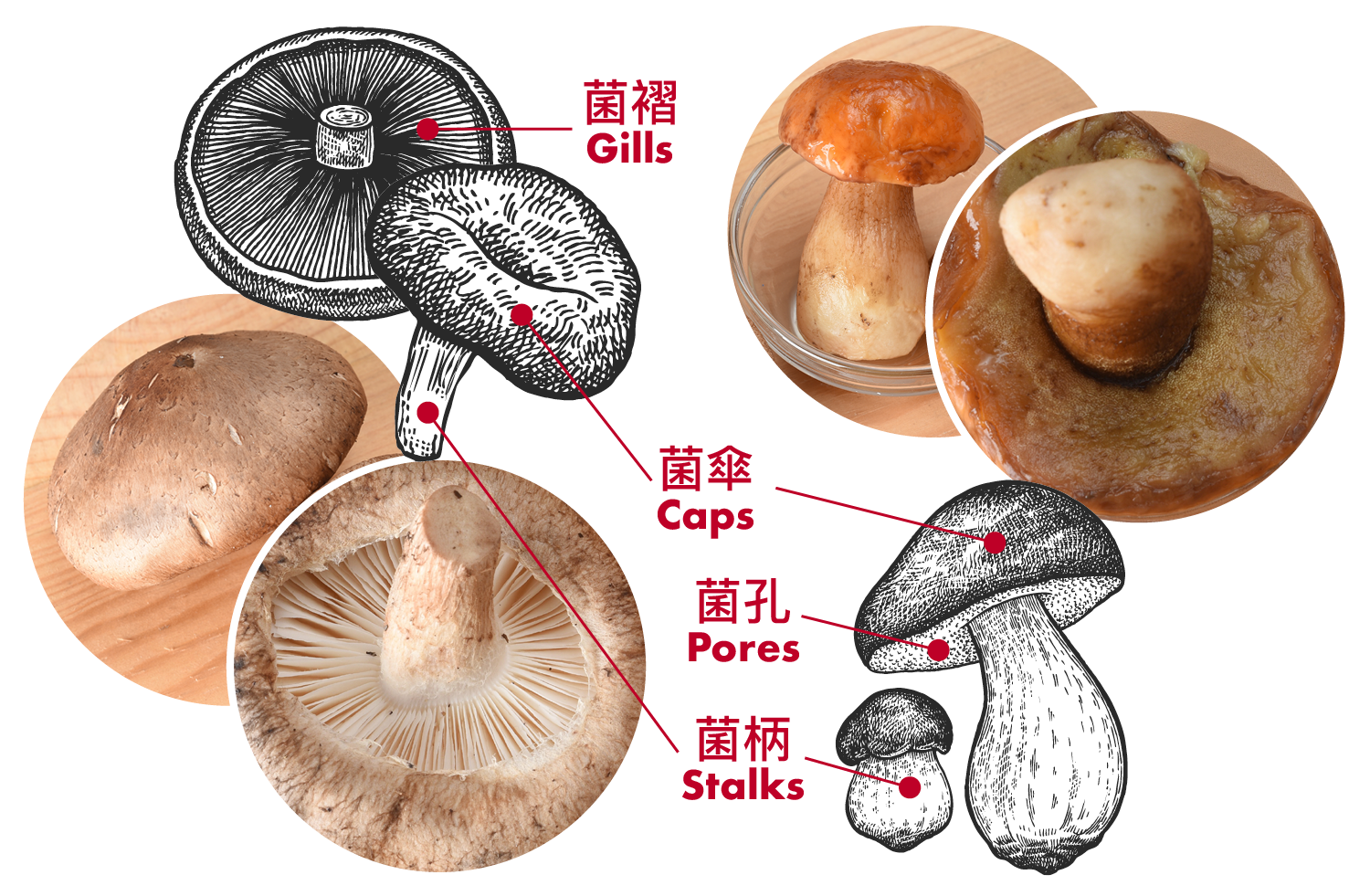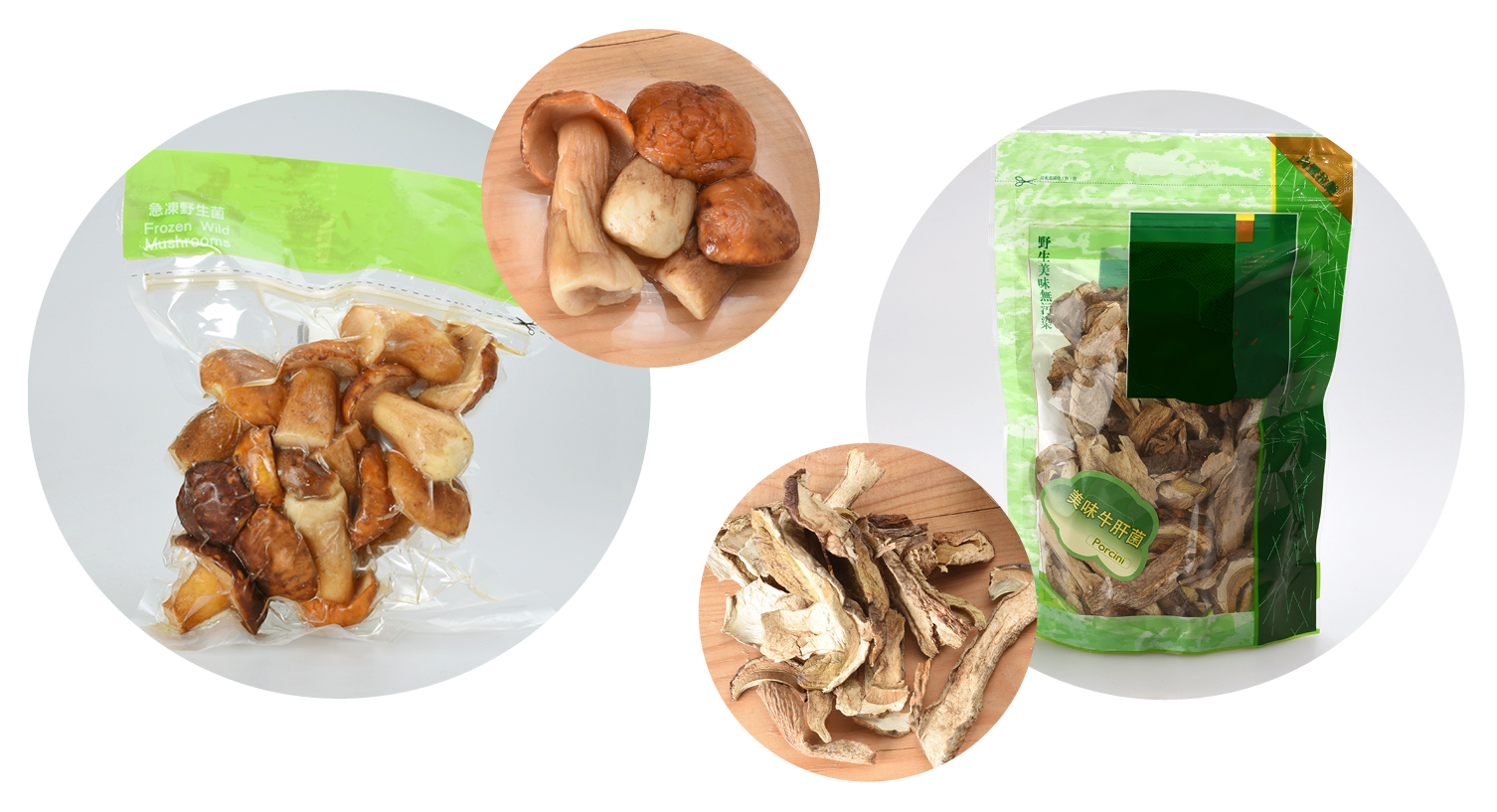
Food Safety Focus (140th Issue, March 2018) – Incident in Focus
Are Bolete Mushrooms Safe to Eat?
Reported by Mr. Johnny CHU, Scientific Officer,
Risk Assessment Section,
Centre for Food Safety
In January 2018, the Centre for Health Protection of the Department of Health announced two suspected food poisoning cases involving four persons who developed vomiting and nausea after eating "porcini" mushrooms. The Latin name of porcini is Boletus edulis (other English names include king bolete, penny bun, and ceps). Investigation revealed that the porcini of the two cases were separately purchased at two local exhibitions (i.e. the Hong Kong Food Festival and the 52nd Hong Kong Brands and Products Expo) between December 2017 and January 2018. In both cases the uncooked mushroom samples provided by the affected persons were suspected to contain mixture of edible and inedible/poisonous species. This article describes the features of porcini and the possible mixing of porcini with poisonous mushrooms as well as provides advice to the trade and the public on the prevention of mushroom poisoning.
Porcini Mushrooms
Porcini are a member of bolete mushrooms which belong to the family Boletaceae. Boletes usually are large fleshy mushrooms. They have a variety of colours with a thick or bulbous stalk and typically have pores on the underside of the cap (Figure 1).

Figure 1: Compare with shiitake mushrooms (left), boletes (right) have pores rather than gills on the underside of the cap.
The most popular, widely traded edible bolete is "porcini" which are mainly traded as fresh, canned, frozen, and dried (Figure 2). Other edible boletes include B. aereus, B. pinophilus, B. reticulatus, etc. Porcini are common in North America and Northern Europe. In the Mainland, they are widely distributed in Yunnan, Sichuan, Guizhou, Henan, Heilongjiang, Tibet, and Fujian. Porcini have a chewy texture and a strong nutty taste and unlike most mushrooms they maintain the flavour after drying and cooking. Consequently, they are a popular ingredient in a variety of stews and sauces as well as a delicious topping for pizza.

Figure 2: Besides fresh, porcini may be traded as canned, frozen (left), and dried (right).
In their natural habitats, the underground part of porcini forms a beneficial, symbiotic relationship with the roots of trees. This explains why many attempts to cultivate porcini have been unsuccessful and why commercial porcini are basically harvested wild.
According to literature, there are hundreds of boletes and some are poisonous; for example, Tylopilus nigerrimus, Pulveroboletus ravenelii, and Heimioporus retisporus are poisonous boletes. In Europe, the Rapid Alert System for Food and Feed of the European Commission has recorded several incidents of dried porcini containing poisonous mushrooms since 2001, indicating that mixing porcini with poisonous mushrooms (such as poisonous boletes) may be possible during wild mushroom harvesting. In fact, food poisonings due to consumption of commercial porcini containing inedible/poisonous mushrooms were reported in the Mainland and in Hong Kong.
Public Health Significance
Mushroom poisoning is generally acute. Common presentations include gastrointestinal symptoms such as nausea, vomiting, and abdominal pain appearing shortly after ingestion. Depending on the types of poisonous mushrooms, the affected persons may have other symptoms such as extreme thirst, profuse sweating, coma, hallucination, euphoria, and liver damage.
Actions Taken
Upon receiving notification of the food poisoning cases, the Centre for Food Safety immediately conducted investigation to trace the source of supply of the concerned mushrooms and requested the business involved to stop sale. A press release was issued on 29 January 2018 to appeal to members of the public who had purchased porcini from the above-mentioned exhibitions not to consume them.
Preventive Measures
Since there may be poisonous mushrooms that resemble porcini, care should be taken to ensure, when porcini are being harvested, that only edible species are collected. Further, the food industry should also follow Codex Standard for Edible Fungi and Fungus Products and Standard for Dried Edible Fungi to prevent contamination and spoilage during processing.
Key Points to Note:
- There are many boletes: some are edible (such as porcini) and some are poisonous.
- Mixing of porcini with poisonous mushrooms is possible during wild mushroom harvesting.
- Wild porcini destined for sale should be harvested by trained, experienced workers. The public should not pick wild mushrooms for consumption.
Advice to the Trade
- Ensure porcini sold, whether fresh or not, are fit for human consumption.
- Source porcini from reputable and reliable suppliers; and ensure that suppliers have measures to prevent porcini from mixing with poisonous mushrooms.
- Adhere strictly to the Food Safety Ordinance in record keeping.
Advice to the Public
-
Do not buy mushroom products which are doubted to be mixed with unknown species.
- Do not buy porcini which look unhygienic or show signs of spoilage, and avoid packages made up of too much dust or crumbled pieces.
- If mushroom poisoning is suspected, the patient should seek immediate medical attention and bring the uncooked mushrooms or the remnants of mushrooms to the doctor.
| Are cooked poisonous mushrooms safe to eat? |
|---|
| Raw or cooked poisonous mushrooms are not safe to eat because they contain toxins that cannot be destroyed by cooking. |
| Edible mushrooms should be thoroughly cooked prior to consumption. Why? |
| For mushrooms that are edible, they may not be safe when consumed raw. Many edible mushrooms contain irritating/toxic substances. Thorough cooking can destroy these substances. |

